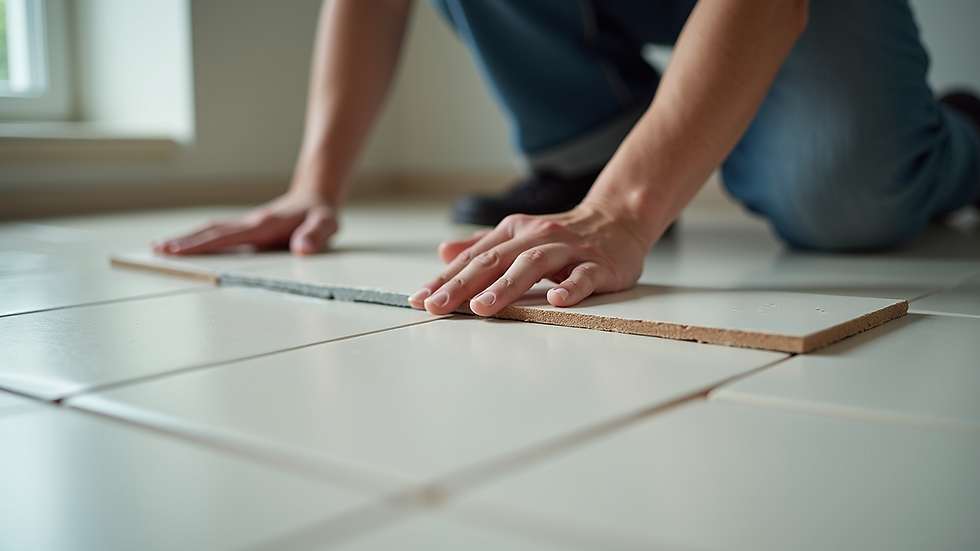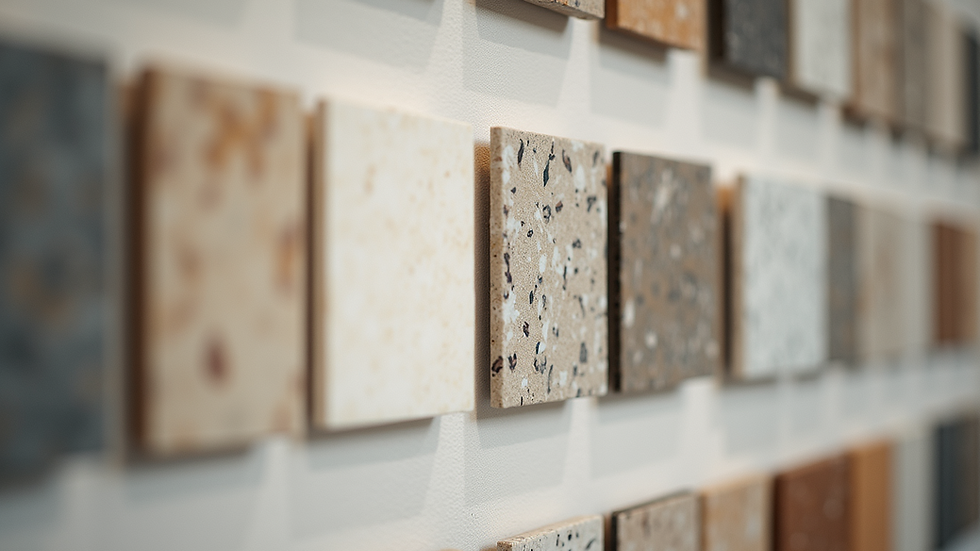The Ultimate Flooring Installation Guide for Homeowners
- Sun Floor Installation

- Sep 29
- 4 min read
Choosing the right flooring and installing it properly can transform any space into a warm, inviting haven. Whether you’re refreshing your living room or upgrading your office, the process might seem daunting at first. But with a little guidance and patience, you can achieve a beautiful, durable floor that lasts for years. I’m here to walk you through the essentials, sharing practical advice and encouraging you every step of the way.
Flooring Installation Tips to Get You Started
Before diving into the installation, it’s important to prepare well. Flooring installation is not just about laying down planks or tiles; it’s about creating a foundation for comfort and style. Here are some tips to keep in mind:
Choose the right material for your space. Consider durability, moisture resistance, and maintenance. For example, hardwood offers timeless beauty but may not be ideal for bathrooms, while vinyl or tile can handle moisture better.
Acclimate your flooring materials. Let your flooring sit in the room for at least 48 hours before installation. This helps the material adjust to the room’s temperature and humidity, reducing the risk of warping or gaps later.
Measure twice, cut once. Accurate measurements prevent costly mistakes. Take your time measuring the room’s length, width, and any irregularities.
Prepare your subfloor. A clean, level subfloor is essential for a smooth installation. Remove old flooring, repair cracks, and ensure the surface is dry.
These tips set the stage for a successful project. Remember, patience and preparation are your best friends here.

Selecting the Best Flooring for Your Home
The choice of flooring depends on your lifestyle, budget, and the room’s function. Here’s a quick rundown of popular options:
Hardwood: Classic and elegant, hardwood floors add warmth and value. They require regular maintenance but can be refinished multiple times.
Laminate: A budget-friendly alternative that mimics wood or stone. It’s durable and easy to clean but less resistant to moisture.
Vinyl: Highly versatile and water-resistant, vinyl is perfect for kitchens and bathrooms. It comes in planks, tiles, or sheets.
Tile: Ceramic or porcelain tiles are durable and moisture-resistant, ideal for high-traffic or wet areas.
Carpet: Soft and cozy, carpet adds comfort but may not be suitable for allergy sufferers or damp spaces.
When choosing, think about how much foot traffic the area will get, exposure to moisture, and your personal style. Don’t hesitate to request samples and see how they look in your lighting.
What Should I Lay Down Before Flooring?
Laying down the right underlayment or subfloor is crucial for a long-lasting floor. It acts as a cushion, moisture barrier, and sound absorber. Here’s what you need to know:
Plywood or OSB (Oriented Strand Board): These are common subfloor materials that provide a sturdy base. Make sure they are level and securely fastened.
Underlayment: Depending on your flooring type, you might need foam, cork, or felt underlayment. For example, laminate floors often require foam underlayment to reduce noise and provide cushioning.
Moisture barriers: In areas prone to moisture, such as basements or bathrooms, a plastic sheet or specialized moisture barrier can protect your flooring from damage.
Self-leveling compound: If your subfloor has uneven spots, applying a self-leveling compound can create a smooth surface for installation.
Taking the time to prepare the base properly will save you headaches down the road and ensure your floor looks flawless.

Step-by-Step Flooring Installation Process
Now that you’ve chosen your flooring and prepared the subfloor, it’s time to install. Here’s a general step-by-step guide that applies to many flooring types:
Clear the room: Remove furniture, rugs, and baseboards.
Clean the subfloor: Sweep and vacuum to remove dust and debris.
Lay the underlayment: Roll out or place the underlayment according to the manufacturer’s instructions.
Plan your layout: Decide the direction of the flooring planks or tiles. Usually, running planks parallel to the longest wall looks best.
Start installation: Begin at one corner, leaving a small expansion gap (usually 1/4 inch) around the edges to allow for natural expansion.
Cut pieces as needed: Use a saw or cutter to fit pieces around corners and obstacles.
Secure the flooring: Depending on the type, click-lock, glue, or nail the flooring in place.
Install transition strips and baseboards: These cover expansion gaps and give a polished look.
Clean up: Remove any dust or adhesive residue.
Each flooring type has its nuances, so always follow the manufacturer’s instructions closely. If you want more detailed advice, this flooring installation guide is a fantastic resource.

Caring for Your New Floor
Once your floor is installed, keeping it in great shape is easier than you might think. Here are some simple care tips:
Regular cleaning: Sweep or vacuum frequently to remove dirt and grit that can scratch surfaces.
Use mats and rugs: Place them at entrances to catch debris and protect high-traffic areas.
Avoid harsh chemicals: Use cleaners recommended for your flooring type to prevent damage.
Protect from furniture: Use felt pads under furniture legs to avoid scratches.
Control humidity: Maintain indoor humidity between 35% and 55% to prevent wood floors from expanding or contracting excessively.
With a little attention, your floor will continue to shine and support your daily life beautifully.
Bringing It All Together
Installing new flooring is a rewarding project that can refresh your space and add value to your home. By choosing the right materials, preparing your subfloor carefully, and following a clear installation process, you set yourself up for success. Remember, this journey is about creating a foundation that welcomes you home every day.
If you ever feel unsure, don’t hesitate to reach out to professionals who can guide you with expert craftsmanship. After all, a well-installed floor is the stage for countless memories to come.
Happy flooring!




Comments